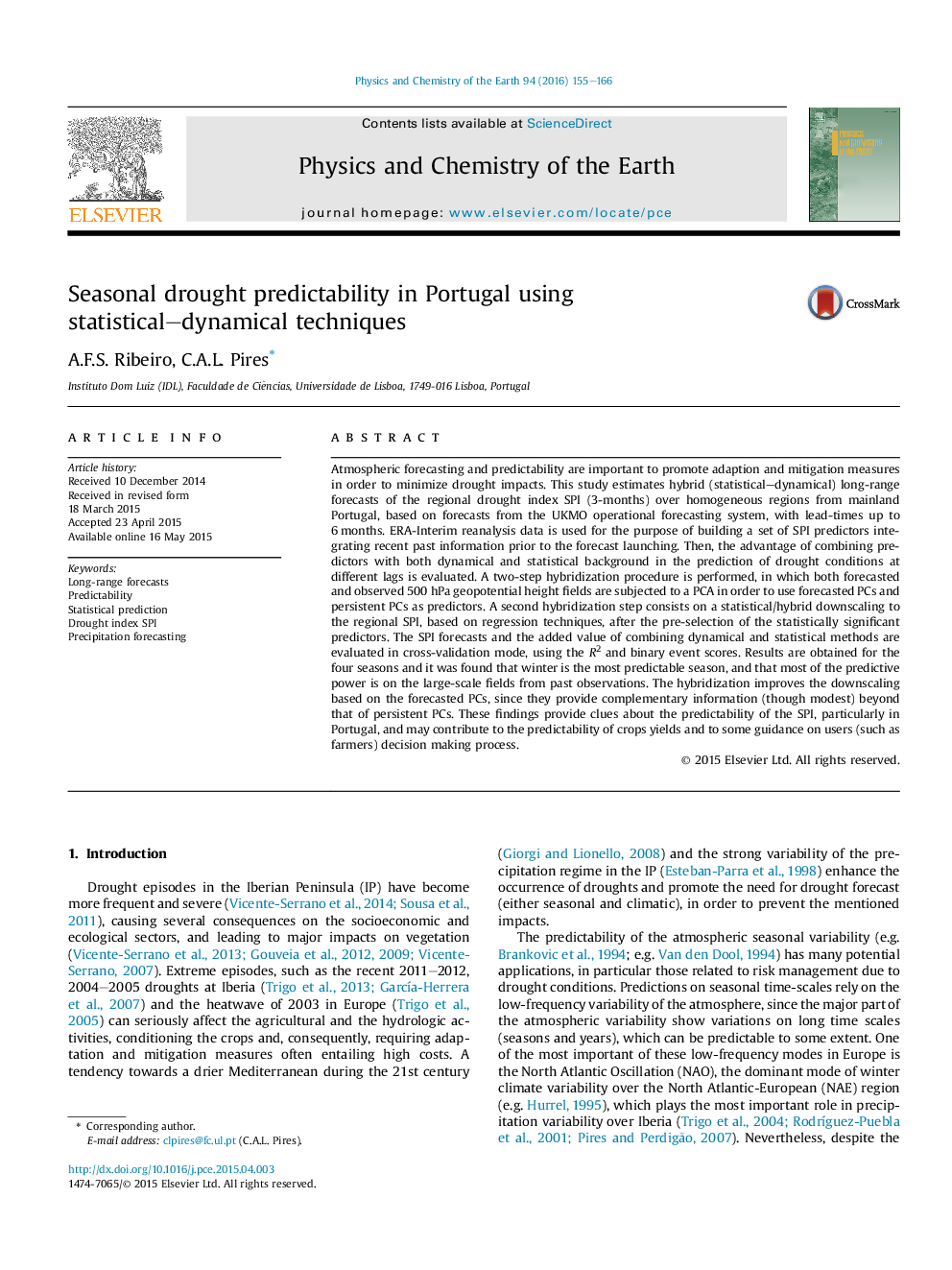| کد مقاله | کد نشریه | سال انتشار | مقاله انگلیسی | نسخه تمام متن |
|---|---|---|---|---|
| 4720831 | 1639344 | 2016 | 12 صفحه PDF | دانلود رایگان |
• Hybrid (statistical–dynamical) long-range forecasts of the drought index SPI are performed and evaluated.
• Large-scale filter predictors from past observations and dynamical forecasts are used to downscale SPI.
• Hybridization improves forecasting drought skill in comparison to purely dynamical forecasts.
• Persistence of large-scale patterns displays the main role in the long-range predictability of precipitation.
Atmospheric forecasting and predictability are important to promote adaption and mitigation measures in order to minimize drought impacts. This study estimates hybrid (statistical–dynamical) long-range forecasts of the regional drought index SPI (3-months) over homogeneous regions from mainland Portugal, based on forecasts from the UKMO operational forecasting system, with lead-times up to 6 months. ERA-Interim reanalysis data is used for the purpose of building a set of SPI predictors integrating recent past information prior to the forecast launching. Then, the advantage of combining predictors with both dynamical and statistical background in the prediction of drought conditions at different lags is evaluated. A two-step hybridization procedure is performed, in which both forecasted and observed 500 hPa geopotential height fields are subjected to a PCA in order to use forecasted PCs and persistent PCs as predictors. A second hybridization step consists on a statistical/hybrid downscaling to the regional SPI, based on regression techniques, after the pre-selection of the statistically significant predictors. The SPI forecasts and the added value of combining dynamical and statistical methods are evaluated in cross-validation mode, using the R2 and binary event scores. Results are obtained for the four seasons and it was found that winter is the most predictable season, and that most of the predictive power is on the large-scale fields from past observations. The hybridization improves the downscaling based on the forecasted PCs, since they provide complementary information (though modest) beyond that of persistent PCs. These findings provide clues about the predictability of the SPI, particularly in Portugal, and may contribute to the predictability of crops yields and to some guidance on users (such as farmers) decision making process.
Journal: Physics and Chemistry of the Earth, Parts A/B/C - Volume 94, August 2016, Pages 155–166
